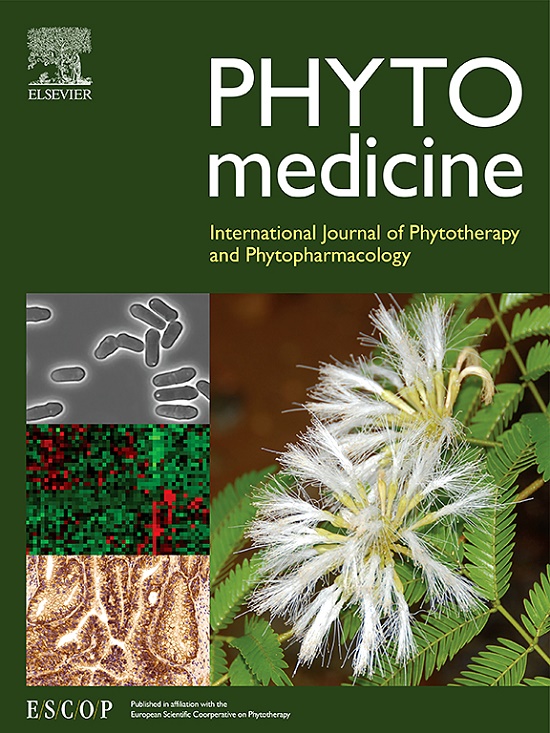氧化还原失衡驱动的表观遗传重编程和心血管功能障碍:植物化合物用于潜在的外源性药物。
IF 6.7
1区 医学
Q1 CHEMISTRY, MEDICINAL
引用次数: 0
摘要
背景:心血管疾病(cvd)是全球死亡的主要原因,在2019冠状病毒病(COVID-19)爆发后,心血管疾病越来越受到关注。表观遗传事件如DNA甲基化、组蛋白修饰和非编码rna对心血管疾病的发病率和发病有重要影响。氧化还原状态的改变是调节与心血管疾病相关的表观遗传途径的主要致病因素之一。包括中药在内的替代疗法中使用的各种生物活性植物化合物可调节与心血管疾病相关的氧化还原平衡和表观遗传现象。以植物化合物为基础的药物因开发具有成本效益且副作用最小的药物而备受关注,这将具有巨大的治疗应用。目的:本文综述了氧化应激驱动的表观遗传重塑与心血管疾病相关的某些危险因素。此外,该研究还批判性地评估了植物化合物作为HAT/HDAC和dnmt抑制剂以及降低心血管疾病发病率的mirna调节剂的药理功效,旨在寻找新的候选药物作为潜在的外用药物。方法:采用PRISMA流法进行系统文献复习。使用不同的期刊、计算数据库、谷歌Scholar、PubMed、Science Direct、Scopus、ResearchGate等搜索引擎收集在线信息进行文献调查。从世界卫生组织(世卫组织)网站(https://www.who.int/news-room/fact-sheets/detail/cardiovascular-diseases-(cvds)和美国心脏病和中风心脏协会收集的统计信息报告了心血管疾病的国际和国家状况。结果:文献中对各种研究进行了荟萃分析,揭示了主要的风险因素,如社会经济参数,这些因素对氧化还原失衡、表观遗传调节和心血管疾病的影响很大。展望未来,氧化还原失衡驱动的表观遗传调控包括DNA甲基化状态、组蛋白修饰和非编码rna表达模式的改变,这些改变进一步调控了各种转录因子的全局和启动子修饰,从而导致cvd的发生。此外,还讨论了草药中使用的各种生物活性化合物在氧化还原调节和表观遗传修饰方面的作用。阐述了这些植物化合物的药理学安全剂量和临床试验的不同阶段,从而阐明了这些植物化合物作为有前景的药物的接受程度。结论:这篇综述表明,利用植物化合物作为潜在的外用药,靶向氧化还原失衡驱动的表观遗传重编程,治疗和预防心血管疾病之间存在很强的联系。未来的深入研究需要评估CVD进展过程中植物化合物介导的表观遗传重编程和氧化应激管理背后可能的分子机制。本文章由计算机程序翻译,如有差异,请以英文原文为准。

Redox imbalance driven epigenetic reprogramming and cardiovascular dysfunctions: phytocompounds for prospective epidrugs
Background
Cardiovascular diseases (CVDs) are the major contributor to global mortality and are gaining incremental attention following the COVID-19 outbreak. Epigenetic events such as DNA methylation, histone modifications, and non-coding RNAs have a significant impact on the incidence and onset of CVDs. Altered redox status is one of the major causative factors that regulate epigenetic pathways linked to CVDs. Various bioactive phytocompounds used in alternative therapies including Traditional Chinese Medicines (TCM) regulate redox balance and epigenetic phenomena linked to CVDs. Phytocompound-based medications are in the limelight for the development of cost-effective drugs with the least side effects, which will have immense therapeutic applications.
Purpose
This review comprehends certain risk factors associated with CVDs and triggered by oxidative stress-driven epigenetic remodelling. Further, it critically evaluates the pharmacological efficacy of phytocompounds as inhibitors of HAT/HDAC and DNMTs as well as miRNAs regulator that lowers the incidence of CVDs, aiming for new candidates as prospective epidrugs.
Methods
PRISMA flow approach has been adopted for systematic literature review. Different Journals, computational databases, search engines such as Google Scholar, PubMed, Science Direct, Scopus, and ResearchGate were used to collect online information for literature survey. Statistical information collected from the World Health Organization (WHO) site (https://www.who.int/news-room/fact-sheets/detail/cardiovascular-diseases-(cvds)) and the American Heart Association of Heart Disease and Stroke reported the international and national status of CVDs.
Results
The meta-analysis of various studies is elucidated in the literature, shedding light on major risk factors such as socioeconomic parameters, which contribute highly to redox imbalance, epigenetic modulations, and CVDs. Going forward, redox imbalance driven epigenetic regulations include changes in DNA methylation status, histone modifications and non-coding RNAs expression pattern which further regulates global as well as promoter modification of various transcription factors leading to the onset of CVDs. Further, the role of various bioactive compounds used in herbal medicine, including TCM for redox regulation and epigenetic modifications are discussed. Pharmacological safety doses and different phases of clinical trials of these phytocompounds are elaborated on, which shed light on the acceptance of these phytocompounds as prospective drugs.
Conclusion
This review suggests a strong linkage between therapeutic and preventive measures against CVDs by targeting redox imbalance-driven epigenetic reprogramming using phytocompounds as prospective epidrugs. Future in-depth research is required to evaluate the possible molecular mechanisms behind the phytocompound-mediated epigenetic reprogramming and oxidative stress management during CVD progression.
求助全文
通过发布文献求助,成功后即可免费获取论文全文。
去求助
来源期刊

Phytomedicine
医学-药学
CiteScore
10.30
自引率
5.10%
发文量
670
审稿时长
91 days
期刊介绍:
Phytomedicine is a therapy-oriented journal that publishes innovative studies on the efficacy, safety, quality, and mechanisms of action of specified plant extracts, phytopharmaceuticals, and their isolated constituents. This includes clinical, pharmacological, pharmacokinetic, and toxicological studies of herbal medicinal products, preparations, and purified compounds with defined and consistent quality, ensuring reproducible pharmacological activity. Founded in 1994, Phytomedicine aims to focus and stimulate research in this field and establish internationally accepted scientific standards for pharmacological studies, proof of clinical efficacy, and safety of phytomedicines.
 求助内容:
求助内容: 应助结果提醒方式:
应助结果提醒方式:


